By Rick Sprain
If you’re a photographer, then you must love to travel. Especially here in the state of Arizona. No matter where you call home here in Arizona, you’re only minutes from someplace spectacular that’s deserving to be photographed. Having lived in Prescott for a few years now, I would make the trek to Yuma to visit family as often as
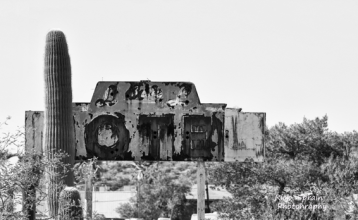
Old hotel sign in Wickenburg
possible. Highway 60, the highway traveling between Wickenburg and Highway 10 near Quartzsite, was once the main road connecting Los Angeles and Phoenix. Small towns such as Agulia, Wenden, Gladden, Harcuvar, Brenda, Hope and Salome became popular rest stops for the weary traveler.
Salome definitely had its share of characters over the years, from the towns co-founder Dick Wickenburg Hall to brothers Russell “Bus” and William Sheffler. Hall (born DeForest Hall) was a humorist who lived in Salome and wrote the towns newsletter The Salome Sun. One of his many characters he developed was the Salome Frog. The frog was a seven-year old bullfrog weighing 18 pounds who never learned to swim because the lack of waterholes in the desert.
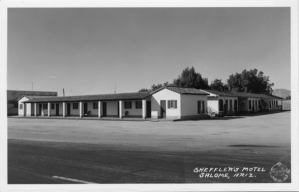
1940s postcard of the Sheffler’s Motel
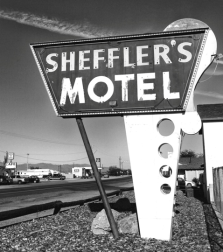
Current sign for Sheffler’s Motel
The Sheffler’s moved to Salome in 1939 after California outlawed gambling from ships anchored off the coast. The brothers supplied slot machines to the mob that were using on the boats as flouting casinos. With the intent to create their own resort in which Californians would flock to, the Sheffler’s constructed the Sheffler’s Motel and purchased Van’s Cafe. Although appearing legitimate, the business were a front for the brothers real interest, which was gambling and prostitution. The cafe building is now home to the Salome Restaurant and the Cactus Bar. The Shefflers Motel is still in business and appears today as it did back in the 1940s.
As you travel up and down Highway 60, you can’t but help to notice the old hotel signs along the way. In the 1940s and 1950’s neon signs were all the rage. Hotels and motels all across the county were placing these bright signs along the highways as beacons for their establishments.
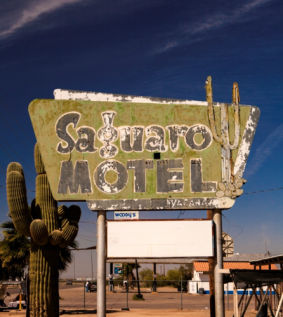
The old Sunset Motel in Wendon has
been beautifuly restored and is now used by
local artests to sell thgeir work
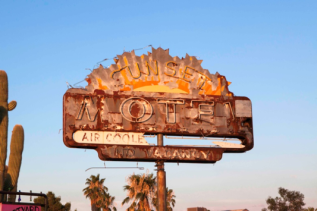
The Saguara Motel sign in Aguila
Quite a few of the old signs are still visible today. Most are no longer operational, but still serve to remind us of days when signs could be a work of art. As you drive along on Highway 60 or Route 66 or any other of the old highways, take a look at the history you are passing. Stop and take photographs of the relics from the past. Some will still have their bright colors reflecting the
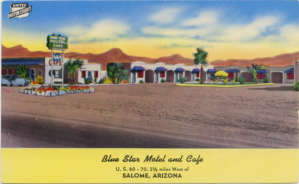
1940s postcard of the Blue Star Motel
afternoon sun while others are barely readable. If you are traveling at night and you’re lucky enough to stumble upon a
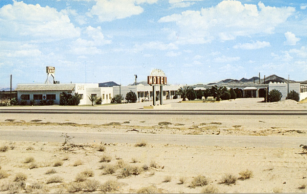
1950s postcard of the Ambers Hills Motel and Cafe
working neon sign, pull over to a safe spot, set up your camera on a tripod and snap a few shots.
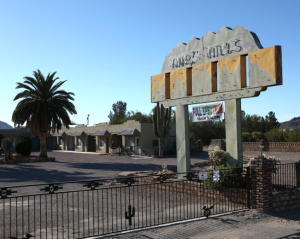
Current sign of the Amber Hills Motel
Rick Sprain is a Volunteer Photo Guide with Arizona Highways PhotoScapes
View Post on Original Blog
https://blog.ahpw.org/2018/03/24/i-see-a-sign/
